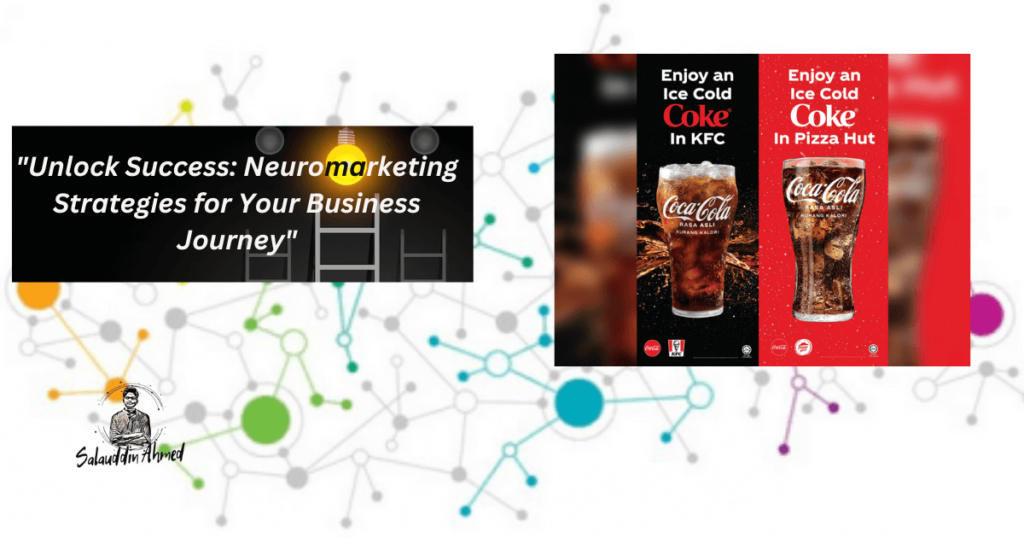Imagine this scenario: You have poured your heart and soul into creating a service, business, or side hustle that offers immense value to your target clients.
However, despite your best efforts, you struggle to attract and retain their attention. How can you break through the noise and connect with their minds in a meaningful way?
The answer lies in the fields of neuromarketing and behavioral economics, which can empower you to understand the psychology behind consumer decision-making and craft compelling strategies that captivate your target clients.
In today’s highly competitive business landscape, understanding the intricacies of consumer behavior has become paramount for success.
Enter the realm of neuromarketing and behavioral economics, where the art of persuasion meets the science of decision-making.
Are you ready to unleash your potential and leave a lasting impression? Let’s dive into the world of neuromarketing, behavioral economics, and the power of trying new things.
The Journey Begins: Sarah’s Struggle to Attract Ideal Clients
Meet Sarah, a passionate entrepreneur who embarked on a journey to build her own consulting business. While she possessed remarkable expertise in her field, she struggled to attract her ideal clients.
One day, Sarah stumbled upon Tim Ferriss’ best-selling book, “The 4-Hour Workweek.” In it, she found a quote that resonated deeply with her: “The timing is never right. It’s always right.”
This powerful insight sparked a realization within Sarah—she needed to embrace new approaches and unlock the secrets of neuromarketing and behavioral economics to conquer the minds of her target clients.
A Revelation from Tim Ferriss: Embracing New Approaches for Success

Inspired by Ferriss‘ philosophy, Sarah delved into the world of neuromarketing, discovering how sensory triggers, emotions, and cognitive biases influence consumer decision-making. She realized that by tapping into her clients’ deepest desires and crafting persuasive messages, she could create a lasting impact.
Sarah also recognized the importance of understanding behavioral economics—the hidden forces that govern our choices—and how they could be leveraged to her advantage.
As Sarah explored the lives of influential individuals like Elon Musk, Oprah Winfrey, and Richard Branson, she discovered that they shared a common trait: a relentless pursuit of trying new things.
This revelation compelled her to step out of her comfort zone and embrace the unfamiliar. Sarah understood that by constantly adapting and innovating, she could stay ahead of the competition and keep her target clients engaged.
Now, let’s examine how famous brands like Coca-Cola and KFC have harnessed the principles of neuromarketing and behavioral economics to achieve both remarkable successes and notable failures.
Coca-Cola: The Sweet Symphony of Neuromarketing
For decades, Coca-Cola has been a trailblazer in applying neuromarketing techniques. The brand’s iconic red and white logo, accompanied by memorable jingles and emotionally resonant advertisements, has created an enduring connection with consumers. However, Coca-Cola’s journey has not been without missteps. The infamous introduction of “New Coke” in 1985 serves as a reminder of the importance of understanding and respecting consumer preferences.
KFC: Cracking the Code of Behavioral Economics
KFC, a prominent fast-food chain, has experienced both triumphs and failures in applying behavioral economics principles. By utilizing scarcity tactics through limited-time offers, KFC has created a sense of urgency and increased demand. However, their attempt to introduce a healthier alternative with the “Grilled Chicken” campaign fell short, highlighting the challenge of shifting deeply ingrained consumer preferences.
Drawing Insights from Coca-Cola and KFC: Lessons for Success and Caution

Understanding Emotional Triggers
Success (Coca-Cola): Coca-Cola’s success lies in creating an emotional connection with consumers. The brand understands the power of nostalgia, employing memorable jingles and advertisements that tap into positive emotions associated with their product.
Caution (KFC): KFC’s attempt to introduce a healthier alternative did not resonate because it conflicted with the indulgent, comfort-food image built over the years. Understanding the emotional associations consumers have with a brand is crucial.
Adapting to Changing Tastes
Success (Coca-Cola): Coca-Cola continually evolves its marketing strategies, adapting to changing consumer preferences. The “New Coke” incident, while initially a failure, showcased the importance of listening to customer feedback and reverting to a familiar product.
Caution (KFC): The attempt to introduce a healthier option was a commendable effort to adapt to changing health trends. However, it failed due to a mismatch with consumer expectations. Brands must balance innovation with maintaining core brand identity.
Utilizing Scarcity and Urgency
Success (KFC): KFC effectively leverages behavioral economics by using scarcity tactics through limited-time offers. This creates a sense of urgency, driving consumer action and increasing demand for their products.
Caution (Coca-Cola): While Coca-Cola often introduces limited-edition flavors, the brand must be cautious not to deviate too far from the core product that consumers love. Balance is key to avoiding alienating loyal customers.
Consistent Innovation:
Success (Both): Both Coca-Cola and KFC have demonstrated the importance of consistent innovation. Coca-Cola’s introduction of new flavors and KFC’s experimentation with menu items show a commitment to staying relevant and exciting for consumers.
Learning from Failures
Success (Both): Both brands have experienced failures (e.g., New Coke, Grilled Chicken), but their ability to learn from these mistakes and course-correct is crucial. It’s a testament to resilience and the understanding that not every experiment will succeed.
Sarah’s Transformation: Applying Lessons in Real Life
Inspired by these insights, Sarah implemented a multifaceted approach for her consulting business:
Emotional Connection: Sarah focused on creating emotional connections with her clients. She revamped her messaging to highlight the positive outcomes her services could bring, emphasizing the emotional impact on clients’ lives and businesses.
Adaptability: Sarah embraced adaptability, regularly seeking client feedback and adjusting her services accordingly. This not only improved client satisfaction but also showcased her commitment to meeting evolving needs.
Innovation: Taking a page from Coca-Cola and KFC, Sarah introduced innovative consulting packages and workshops. This not only attracted new clients but also kept existing ones engaged with fresh and valuable offerings.
Learning from Setbacks: Sarah understood that not every idea would resonate perfectly. When a new service offering didn’t gain traction, she promptly learned from client feedback, adjusted her approach, and iterated until she found the right formula.
Conclusion
Neuromarketing and behavioral economics provide a powerful framework for understanding and influencing consumer behavior. By learning from successful and cautionary tales like Coca-Cola and KFC, and by applying these principles in real-life scenarios, individuals like Sarah can break through the noise, connect meaningfully with clients, and ultimately unleash their full potential in the competitive business landscape.

